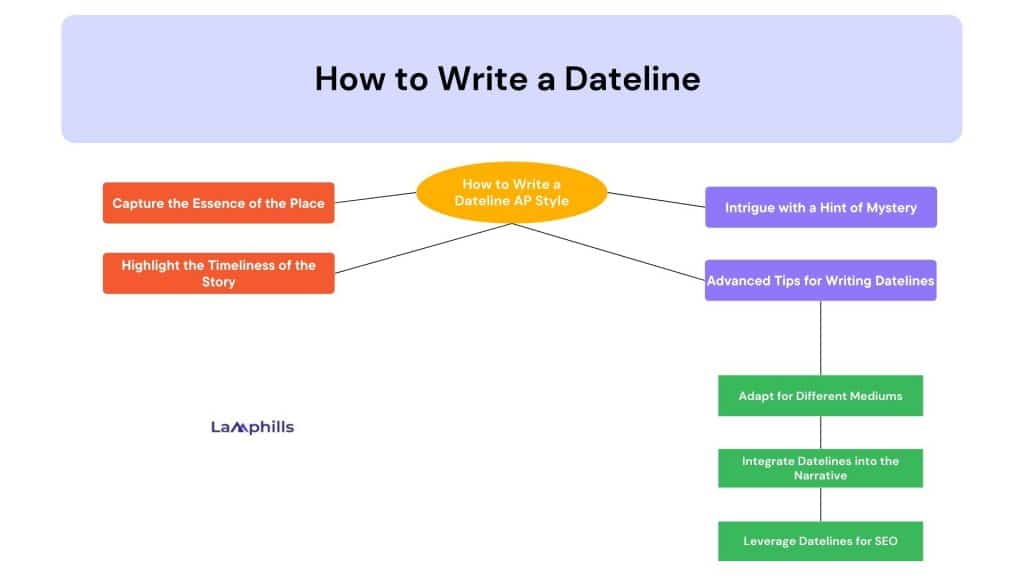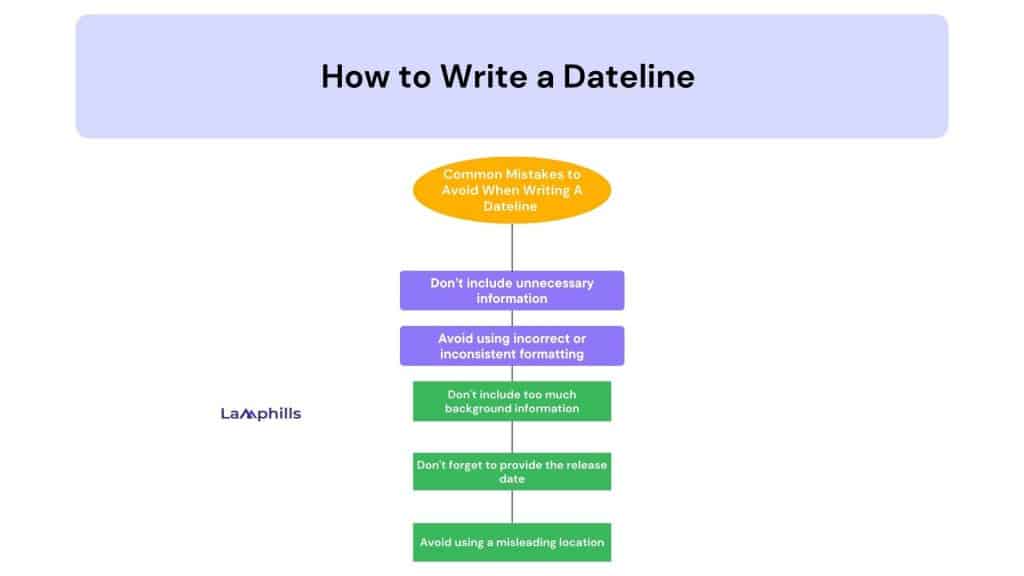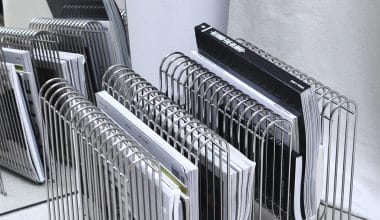Ever stared at a blank document, story prepped and ready to roll, but felt a nagging sense of incompleteness? You’re not alone. For many journalists, myself included, that missing piece often lies in the seemingly simple yet crucial element: the dateline. Now, I know what you might be thinking: “A dateline? How did I write it? Isn’t that just the city and date slapped on top?”
Well, yes and no. While it may appear unassuming, a well-crafted dateline sets the stage for your story, establishing its context and grabbing the reader’s attention right from the get-go. Think of it as the handshake before diving into a captivating conversation.
But fear not, my friends! This post is your one-stop shop for mastering the art of the dateline. We’ll delve into the what, why, and how, equipping you with the knowledge to write datelines that inform, intrigue, and leave a lasting impression.
Key Points
- A dateline is a vital element at the beginning of a news article that provides the story’s origin, including the city and date. It adds credibility, context, and immediacy to the report. A well-crafted dateline sets the stage for your story and helps grab the reader’s attention.
- The standard format includes the city name (in caps), state/country abbreviation, and date (formatted according to your style guide). Examples are provided for AP style and variations for online content and international stories.
- Beyond the basics, consider incorporating the essence of the place (e.g., “Keep Austin Weird”), highlighting the timeliness (e.g., “Under Rising Waters”), or sparking intrigue with a hint of mystery (e.g., “Secrets Unveiled”).
- To maintain the effectiveness of a dateline, avoid including unnecessary information, using inconsistent formatting, or providing misleading locations. Ensuring the dateline accurately reflects where and when the news is happening, and adhering to established guidelines, boosts the credibility and impact of your press releases and news articles.
What is a Dateline?
At its core, a dateline is a brief piece of text included at the beginning of a news article. It provides essential information about the story’s origin, typically comprising the city and sometimes the country where the events took place, along with the publication date. This unassuming line of text not only grounds the reader in a specific location but also adds credibility and context to the report.
In my early days, I often overlooked the significance of a dateline. My mentor, a seasoned journalist with decades of experience, once pointed out, “A dateline is your story’s anchor. It tells the reader, ‘This happened here.’ Without it, your story floats in a void.” That advice stuck with me, and I’ve since come to appreciate the power of a well-placed dateline.
Importance of Including a Dateline
A well-written press release with a clear and succinct dateline can assist a company’s message to be effectively delivered, increasing the likelihood of media attention and news stories. To increase the effect of a press release reporting vital news or updates, businesses may consider hiring a distribution service and adhering to a sample press release format containing a clear and informative dateline.
Any good public relations plan must include a dateline in its press release. A precise and concise dateline can boost a press release’s legitimacy, increasing the likelihood of media coverage and reader interest.
By including a dateline in a press release, businesses can ensure their message is delivered clearly and effectively to their target audience. A dateline can convey a sense of immediacy and urgency, motivating readers to act or follow up on the information provided.
In addition, having a dateline in a press release might help to establish the credibility of the news or information offered. This is especially crucial when a company is announcing vital news or making significant announcements that may affect their business or sector.
Formatting Guidelines to Write a Dateline
Formatting requirements to write a dateline in a press release are critical since they help to guarantee that the news release is presented professionally and consistently. A common dateline in a news release includes the city or town where the announcement was issued, as well as the date.
The dateline should appear at the beginning of the initial sentence, immediately following the headline. This helps readers and media outlets understand that the news or information in the press release is time-sensitive and requires quick attention.
The formatting guidelines for a dateline in a press release vary depending on the style guide being used. Following formatting guidelines to write a dateline in a press release might help to enhance the reach and impact of the press release.
What Information to Include in a Dateline?
When writing a press release, the dateline sets the stage, acting as the initial hook that entices journalists to keep reading. It is critical to follow the AP Style press release needs, which recommends writing the dateline in all capital letters, followed by a hyphen and the release date.
Writing a fascinating and informative dateline for your press release is critical for capturing journalists’ attention and ensuring your story gets the coverage it deserves. Understanding the important components of a dateline and their importance in expressing crucial information allows you to effectively captivate your readers from the first sentence.
However, before going into the content, it’s necessary to write a clear and succinct dateline that gives crucial context. The dateline format typically includes the location where the story originates, along with the date of immediate release.
Download Lamphill’s Checklist
To write an effective dateline, pay close attention to detail and follow the standard press release format. It serves as the foundation for accurate and professional news delivery. As a small business looking for media attention, a well-structured press release with an engaging dateline can have a big impact on your public relations efforts.
To guarantee that your press release contains all of the required elements, provide supporting information within the dateline. This includes the city or town where the event or announcement took place, as well as the abbreviated state designation. By including this information, journalists can instantly determine the location and context of your story.
How to Write a Dateline
Now, let’s get down to brass tacks. Here’s what a standard dateline typically entails:
- City Name: This is usually written in all caps (e.g., NEW YORK).
- State (or Country) Abbreviation: For US-based stories, the state abbreviation follows the city name (e.g., NEW YORK, NY). For international stories, the country name might be used instead (e.g., LONDON, ENGLAND).
- Date: This is formatted according to your chosen style guide (more on that later).
Here’s a personal example:
I once wrote a piece about a vibrant street art scene in Austin, Texas. The dateline for that story was simply: AUSTIN, TX. Short, clear, and to the point, it instantly informed readers of the story’s location.
While the basic format remains consistent, datelines can sometimes adopt different forms depending on the context. Here are a few examples I’ve encountered in my field experience:
- Dateline with Byline: This combines the city and date with the author’s name. (e.g., **By JOHN SMITH, NEW YORK, NY – Jan. 25, 2024)
- Dateline for Online Content: Online publications might opt for a more flexible approach, displaying the city and date within the opening paragraph of the story.
- Dateline for International Stories: For stories originating outside the US, the country name often replaces the state abbreviation. (e.g., **TOKYO, JAPAN – May 29, 2024)
How to Write a Dateline AP Style

Many publications adhere to the Associated Press (AP) Stylebook, the industry standard for journalistic writing in the US. Here’s what an AP-style dateline looks like:
- City Name: In all caps (e.g., SEATTLE).
- Date: Month, day, year, separated by commas and no punctuation following the year. (e.g., **SEATTLE, Wash., Jan. 25, 2024)
While the core elements remain the same, a well-crafted dateline can go beyond simply stating the location and date. Here are some creative ways to write and elevate your dateline game:
#1. Capture the Essence of the Place:
Remember that first street art story in Austin? I could have simply used “Austin, TX,” but I opted for something more evocative. During my research, I discovered a local saying, “Keep Austin Weird.” Intrigued, I decided to incorporate it into the dateline, crafting: “Keep Austin Weird,” AUSTIN, TX. It instantly set the tone for the story, hinting at the city’s quirky and artistic spirit.
While covering a historical reenactment in Gettysburg, Pennsylvania, I used the dateline: Echoes of the Past, GETTYSBURG, PA. This not only established the location but also subtly hinted at the story’s theme of revisiting a pivotal moment in history.
#2. Highlight the Timeliness of the Story:
Sometimes, the “when” is just as important as the “where.” For instance, if I were reporting on a breaking news story about a flash flood, the dateline could read: Under Rising Waters, RIVERDALE, CA – May 29, 2024. This urgency grabs the reader’s attention and emphasizes the immediacy of the situation.
I once chased a total solar eclipse across the country. The dateline for that story wasn’t just the city, but the specific location within the path of totality: In the Path of Darkness, GRAND TETON NATIONAL PARK, WY – Aug. 21, 2023. It instantly conveyed the unique experience of witnessing this astronomical phenomenon.
#3. Intrigue with a Hint of Mystery:
Let’s say you’re writing a feature piece about a hidden gem, a small town with a surprising secret. The dateline could be: Secrets Unveiled, MYSTERY TOWN, USA. This piques the reader’s curiosity, enticing them to delve deeper into the story.
Advanced Tips for Writing Datelines
- Adapt for Different Mediums: While print and digital news typically follow strict dateline conventions, broadcast journalism can be more flexible. Adapt your dateline style to suit the medium without losing clarity.
- Integrate Datelines into the Narrative: In feature writing or long-form journalism, a dateline can be woven into the narrative to enhance storytelling. Writing a feature on the aftermath of Hurricane Katrina, I began with, “NEW ORLEANS, a city still reeling from the hurricane’s fury…” This not only set the scene but also drew readers into the story’s emotional landscape.
- Leverage Datelines for SEO: In the digital age, datelines can also impact SEO. Including specific locations can help your article rank higher in location-based searches. Optimizing an article on Silicon Valley startups, I used “SAN JOSE, Calif.” in the dateline. This minor adjustment resulted in a noticeable uptick in local search traffic, demonstrating the SEO value of precise datelines.
Common Mistakes to Avoid When Writing A Dateline

When writing a dateline for a press release, it is critical to avoid frequent blunders that can undermine the release’s impact. Here are a few things to remember:
#1. Don’t include unnecessary information
The dateline should simply reflect the location where the news is breaking or an announcement is being made. Avoid providing unnecessary information, such as the firm logo or executive promotions, as this might clutter the dateline and reduce its effectiveness.
#2. Avoid using incorrect or inconsistent formatting.
The dateline should adhere to a consistent format as defined in the AP Stylebook. Make sure to double-check your formatting to prevent errors.
#3. Don’t include too much background information.
The dateline should provide context for the news being announced, but it should not contain excessive detail. Keep the background information for the body of the news release.
#4. Don’t forget to provide the release date
The dateline should include the particular date of the press release, as this allows media outlets to determine when the news is happening and when it was first published.
#5. Avoid using a misleading location.
The dateline should specify the location where the news or announcement is taking place. Do not include any locations that are irrelevant or deceptive.
By avoiding these frequent mistakes, businesses can ensure that their press releases are effective in getting media coverage and telling their story. Remember to follow press release writing guidelines and include all pertinent details to make the press release as compelling and informative as possible.
Download Lamphill’s Checklist
What is an example of a dateline?
Example of a compelling dateline:
LONDON, UK, April 30, 2023 /Newswirejet/ – JumpStart Tech, a leading provider of innovative software solutions, announced today the launch of its new product line. The launch event will take place at the JumpStart Tech headquarters in London on May 15, 2023.
What is the dateline of a story?
The dateline of a story is a brief line of text that typically appears at the beginning of an article or broadcast. It serves two main purposes:
- Location and Time: It identifies the city (or country) and date where the story originated or where the events in the story took place.
- Context: It provides context for the story by anchoring it in a specific time and place. This helps readers understand the news within its geographical and temporal framework.
For example, a dateline might look like this:
- NEW YORK, NY – May 29, 2024 (Typical format)
- By JOHN SMITH, CHICAGO, IL – Jan. 25, 2024 (Including byline)
- TOKYO, JAPAN (For international stories)
How to write a date in journalism?
There are two main ways to write a dateline in journalism, depending on the style guide you’re following:
1. Associated Press (AP) Style:
The Associated Press Stylebook is the industry standard for journalistic writing in the US. Here’s how to write a date in AP Style:
- Month, day, year: Spell out the month, followed by the day as a numeral and the year, all separated by commas. There’s no punctuation after the year.
Example: SEATTLE, Wash., Jan. 25, 2024
2. Standard Format (Variations Exist):
Many publications use a more basic format, especially for online content. This typically involves:
- Month abbreviation (optional): Some might abbreviate the month (e.g., Jan. for January).
- Day, year: The day is a numeral followed by the year.
What is an example of a dateline in journalism?
Example: AUSTIN, TX – Jan. 25, 2024 (or) AUSTIN, TX – 25 Jan 2024 (less common)
Conclusion
By understanding the “what,” “why,” and “how” of datelines, you’ve equipped yourself with a powerful tool to enhance your storytelling.
Here’s the bottom line:
- A well-crafted dateline establishes context, builds trust, and sets the tone for your story.
- Don’t be afraid to experiment within the boundaries of clarity.
- Use datelines as an opportunity to engage your readers and pique their interest.
How do you use datelines in your writing? Share your experiences and creative approaches in the comments below. Let’s keep the conversation flowing and continue to hone our storytelling craft, one well-placed dateline at a time.
Related Articles
- Press Release Examples to Inspire You in 2024 (+ Expert Tips & Templates)
- How To Write A Compelling Headline in 9 Steps
- How to Effectively Write a Merger Press Release 2024
- The Ideal Press Release Length: How Much Should You Write





